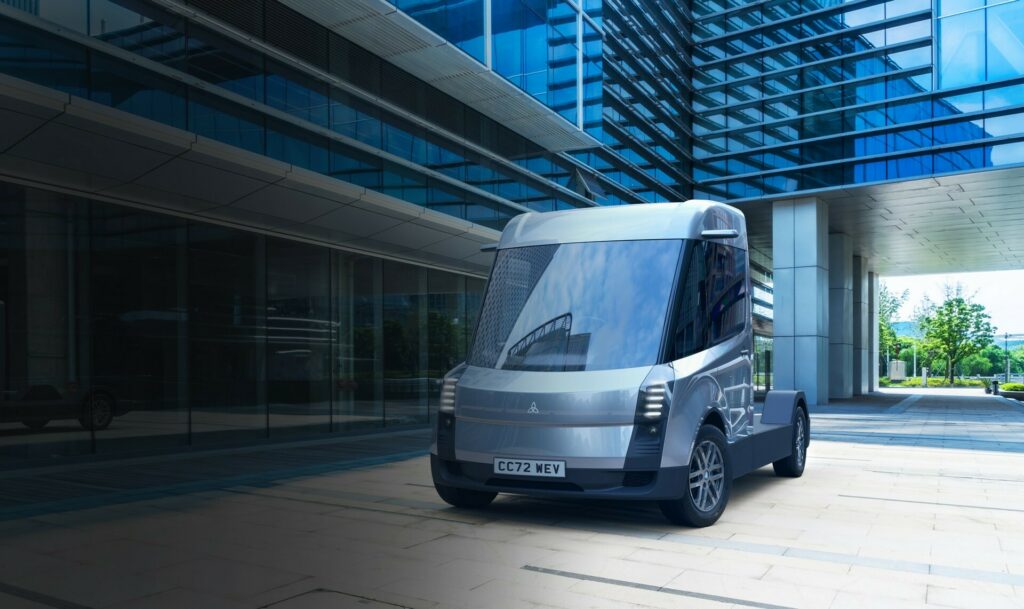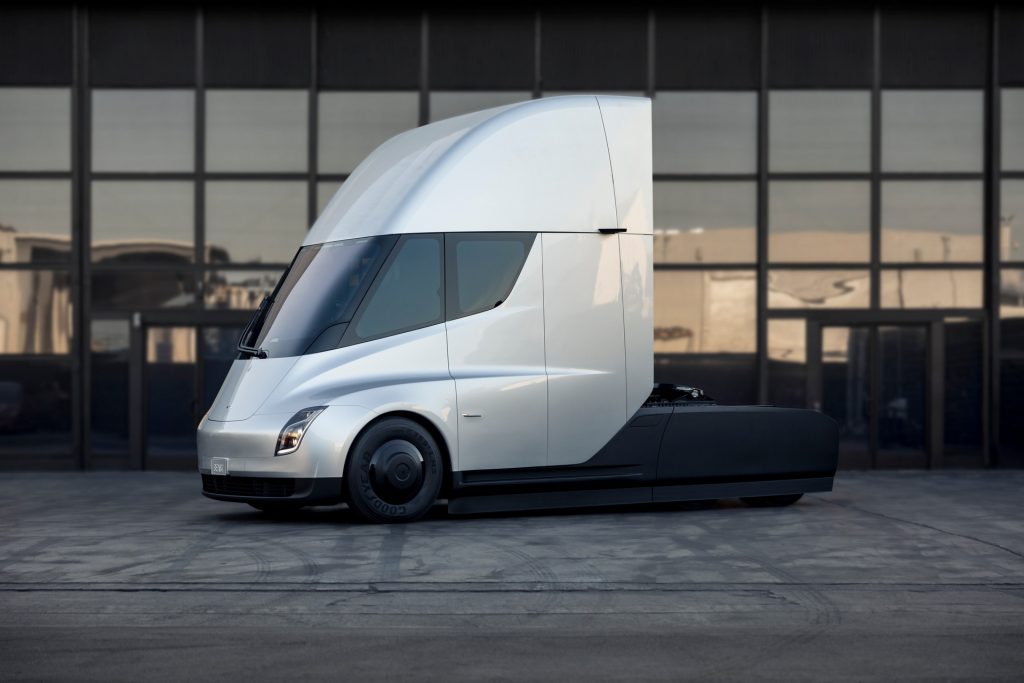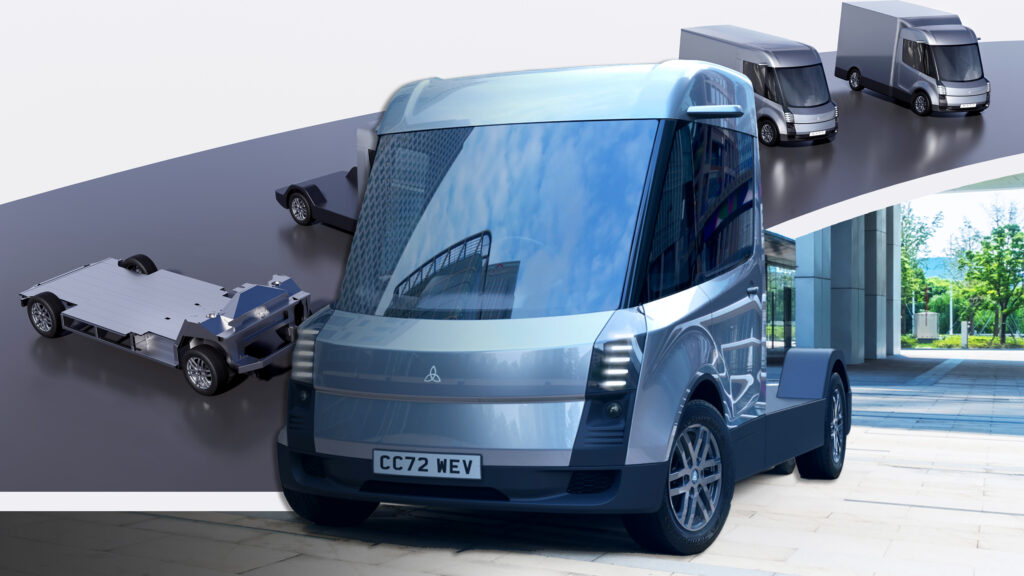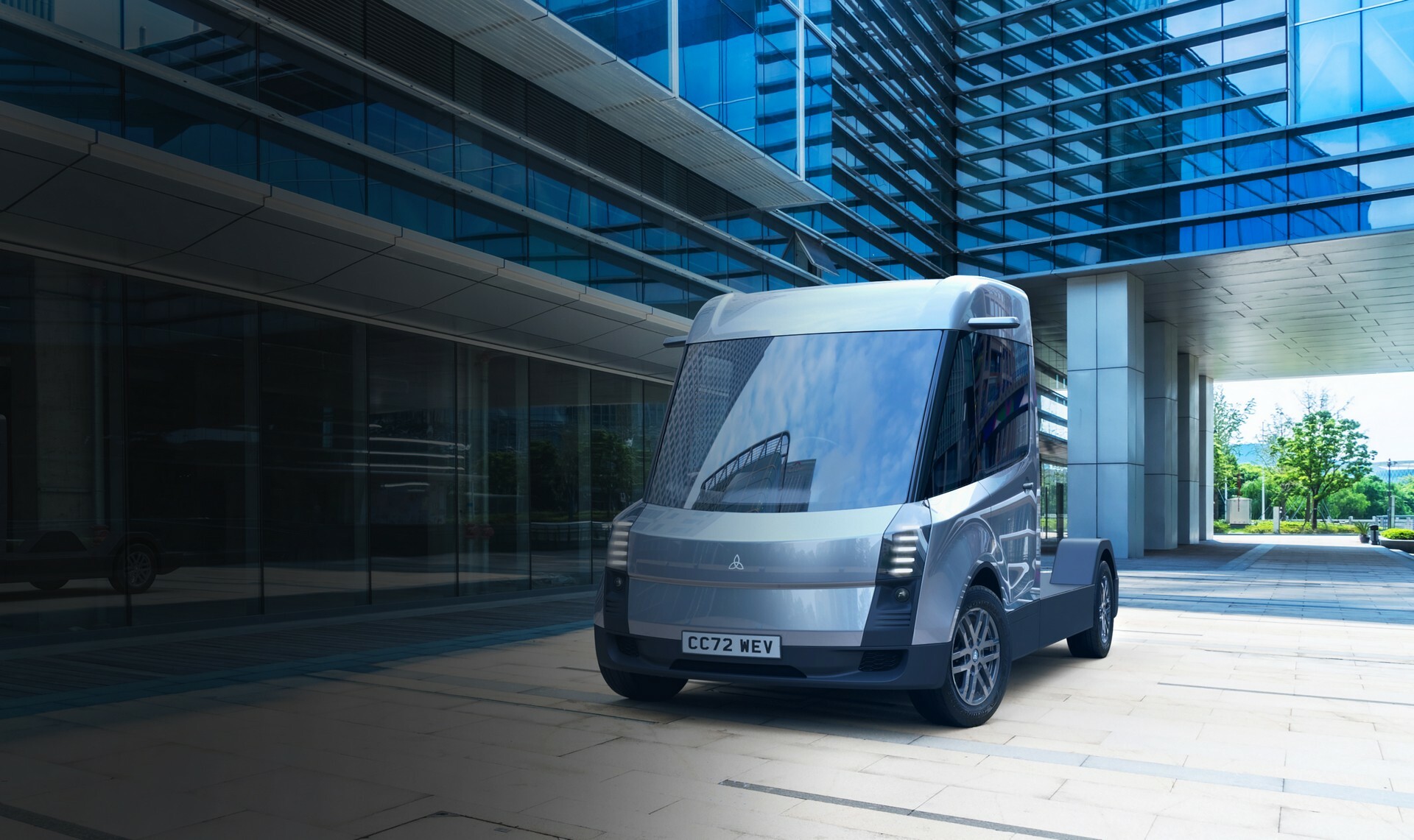Chinese automakers have earned a reputation for ‘borrowing’ designs, but even western firms do it as witnessed by the UK’s Watt Electric Vehicle Company (WEVC). Their first vehicle was inspired by the 1955 Porsche 356, while their second cribs from the Tesla Semi (not to mention the emblem’s resemblance to that used by Mitsubishi).
Known as the eCV1, the model is being billed as a “lightweight and efficient chassis-cab product set to provide the foundation for next-generation electric light commercial vehicles.” That’s all fine and good, but the vehicle echoes the Tesla Semi as it has a similar front bumper and greenhouse as well as a black lower section.
The similarities don’t end there as the eCV1 sports vertical headlights and a side accent that starts by the A-pillar and tapers up into the greenhouse. We can also see wing-like side camera mirrors that echo those found on the original Tesla Semi concept, although in this case they’ve been moved forward.
Also: WEVC Coupe Is A New Electric Sports Car That Looks Like A Classic Porsche And Costs £81,250

WEVC eCV1 vs Tesla Semi concept

WEVC didn’t say much about the vehicle, but noted the eCV1 has a central driver’s seat and can be configured with up to three seats overall. The company went on to say the vehicle has “full standing height headroom, facilitating easy ingress and egress and a ‘walk through cabin’ option that is ideally suited for urban delivery vehicles.”
Specifications are largely a mystery, but the company said the eCV1 rides on the PACES architecture, which supports front-, rear-, and all-wheel drive configurations. WEVC went on to say it uses a cell-to-chassis system, which sees batteries integrated into the structure rather than into a separate battery pack. The company says this optimizes stiffness, minimizes weight, and maximizes payload.
WEVC went on to say the vehicle weighs as little as 3,858 lbs (1,750 kg) and comes equipped with a 110 kWh battery pack that allows for a range of up to 290 miles (467 km). Of course, those numbers will vary depending on the configuration.
The company envisions building up to 5,000 vehicles annually and said we can expect additional details in the coming months.











